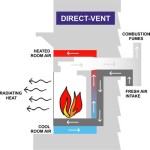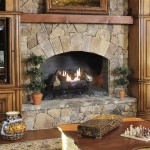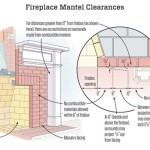Brick Fireplace Outdoor: A Guide to Design, Construction, and Maintenance
An outdoor brick fireplace offers a compelling blend of aesthetic appeal and functional utility, transforming patios and backyards into inviting spaces for relaxation and entertainment. The enduring charm of brick, coupled with the warmth and ambiance of a fire, creates a focal point that enhances the overall outdoor living experience. This article will explore key aspects of designing, constructing, and maintaining an outdoor brick fireplace, providing a comprehensive overview for homeowners considering this addition to their property.
Choosing the Right Brick for Your Outdoor Fireplace
The selection of brick is a foundational element in the construction of an outdoor fireplace, impacting both its appearance and structural integrity. Several factors must be considered when evaluating brick options. Clay brick, known for its durability and classic aesthetic, is a common choice. Concrete brick, offering greater uniformity and often lower cost, presents an alternative. The choice between clay and concrete brick will depend on budgetary constraints, desired aesthetic outcomes, and local climate conditions.
Beyond the material itself, the color, texture, and size of the brick play significant roles in the fireplace's visual impact. A wide range of colors are available, from traditional red and brown hues to more contemporary grays and whites. The texture of the brick, whether smooth, rough, or tumbled, contributes to its character. Furthermore, the size of the brick can influence the overall scale and proportion of the fireplace, necessitating careful consideration of these visual elements during the design phase.
Finally, ensuring the brick is suitable for outdoor use is paramount. Utilizing bricks specifically designed for exterior applications guarantees resistance to weathering, freeze-thaw cycles, and moisture absorption. Failure to select appropriate brick can lead to premature deterioration, compromising the structural stability and longevity of the fireplace.
Designing for Functionality and Safety
The design of an outdoor brick fireplace must prioritize both functionality and safety. The placement of the fireplace within the outdoor space is a crucial consideration, influencing its usability and impact on surrounding structures. Factors such as prevailing wind direction, proximity to flammable materials, and intended seating areas should be carefully evaluated to ensure optimal performance and minimize potential hazards.
The firebox dimensions, flue design, and chimney height are critical elements impacting the fireplace's ability to draw properly and exhaust smoke efficiently. A well-proportioned firebox, coupled with a properly sized flue and chimney, maximizes combustion efficiency and minimizes smoke spillage into the surrounding area. Consulting with a qualified mason or fireplace specialist is highly recommended to ensure proper sizing and design of these critical components.
Safety considerations extend beyond the combustion efficiency of the firebox. Incorporating a non-combustible hearth extension in front of the fireplace is essential to protect the surrounding area from sparks and embers. Maintaining adequate clearance between the fireplace and any overhead structures or vegetation is also crucial to mitigate fire hazards. Furthermore, a spark arrestor installed at the top of the chimney helps prevent the escape of embers, reducing the risk of wildfires or damage to nearby property.
Beyond the core functionality and safety aspects, the design of an outdoor brick fireplace can also incorporate aesthetic and functional enhancements. Features such as built-in seating, storage for firewood, or integrated grilling areas can elevate the overall utility and appeal of the fireplace, transforming it into a versatile outdoor living feature.
Construction Techniques and Considerations
The construction of an outdoor brick fireplace requires a solid understanding of masonry techniques and adherence to local building codes. A properly constructed foundation is essential to ensure the stability and longevity of the fireplace. The foundation should be designed to withstand the weight of the structure and prevent settling or cracking over time. Typically, a concrete footing extending below the frost line is recommended to provide a stable base.
The construction of the brickwork itself requires careful attention to detail. Mortar joints should be consistent in width and depth, ensuring a strong and watertight seal between the bricks. The use of appropriate mortar specifically designed for outdoor applications is critical to resist weathering and freeze-thaw cycles. The brickwork should be laid in a pattern that provides both structural integrity and aesthetic appeal. Common patterns include running bond, stack bond, and herringbone, each offering a distinct visual character.
The firebox requires the use of firebrick, a specialized type of brick designed to withstand the high temperatures of a fire. Firebrick should be laid with refractory mortar, which is specifically formulated to resist high heat and prevent cracking. The firebox should be properly insulated to protect the surrounding brickwork from excessive heat exposure. Insulation materials such as refractory cement or ceramic fiber blankets can be used to effectively insulate the firebox.
The construction of the chimney requires careful attention to detail, ensuring proper draft and smoke expulsion. The chimney should be constructed with a flue liner, which protects the brickwork from corrosive byproducts of combustion. The flue liner should be properly sized to match the firebox dimensions, ensuring efficient smoke removal. The chimney should extend above the roofline to provide adequate draft and prevent downdrafts.
Throughout the construction process, adherence to local building codes is essential. Building permits may be required prior to commencing construction, and inspections may be necessary to ensure compliance with safety regulations. Consulting with a qualified mason or contractor who is familiar with local building codes is highly recommended.
Maintaining Your Outdoor Brick Fireplace for Longevity
Proper maintenance is essential to prolong the life and preserve the aesthetic appeal of an outdoor brick fireplace. Regular cleaning and inspection can help prevent deterioration and ensure safe operation. Cleaning the firebox regularly removes ash and soot buildup, improving combustion efficiency and reducing the risk of chimney fires. A wire brush can be used to scrub the firebox walls and hearth, removing loose debris.
Inspecting the brickwork and mortar joints for cracks and damage is crucial. Cracks in the brickwork can allow water to penetrate, leading to freeze-thaw damage and structural weakening. Damaged mortar joints can compromise the integrity of the fireplace. Any cracks or damage should be repaired promptly. Minor cracks can be filled with patching mortar, while more extensive damage may require the replacement of individual bricks.
Waterproofing the brickwork can help prevent moisture absorption and protect against freeze-thaw damage. A breathable masonry sealant can be applied to the brick surface to repel water while allowing moisture vapor to escape. The sealant should be reapplied periodically, following the manufacturer's recommendations.
Regularly inspecting and cleaning the chimney is also essential. Creosote, a flammable byproduct of combustion, can accumulate in the chimney over time, increasing the risk of chimney fires. A professional chimney sweep should be hired annually to inspect and clean the chimney, removing creosote buildup and ensuring proper draft. The spark arrestor at the top of the chimney should also be inspected and cleaned periodically to remove debris and ensure proper function.
Protecting the fireplace from the elements during the off-season can further extend its lifespan. A custom-fitted cover can be used to shield the fireplace from rain, snow, and ice. Covering the fireplace helps prevent moisture absorption and reduces the risk of freeze-thaw damage. With consistent maintenance, an outdoor brick fireplace can provide years of warmth, enjoyment, and aesthetic appeal.
Addressing Common Problems and Repairs
Despite proper construction and maintenance, outdoor brick fireplaces can encounter common problems over time. Understanding these issues and knowing how to address them is crucial for preserving the fireplace's functionality and appearance. One common problem is mortar deterioration, which can result from weathering, freeze-thaw cycles, or improper mortar mix. Deteriorated mortar joints can lead to water penetration and structural instability.
Repairing damaged mortar joints, a process known as repointing, involves removing the old mortar and replacing it with fresh mortar. The old mortar should be carefully chipped away using a chisel and hammer, taking care not to damage the surrounding bricks. The new mortar should be mixed according to the manufacturer's instructions and applied using a tuckpointing trowel, ensuring a tight and even seal. The repaired joints should be allowed to cure properly before the fireplace is used.
Another common problem is cracked or spalling bricks, which can result from freeze-thaw damage or excessive heat exposure. Spalling refers to the flaking or crumbling of the brick surface. Cracked or spalling bricks can compromise the structural integrity and aesthetic appeal of the fireplace. Replacing damaged bricks involves carefully removing the old brick and replacing it with a new one. The surrounding mortar should be removed, and the new brick should be set in place with fresh mortar.
Chimney problems, such as blockages or cracks, can also occur. Blockages can be caused by bird nests, leaves, or other debris. Cracks can result from settling, weathering, or chimney fires. A blocked chimney can impede draft and increase the risk of smoke spillage. Cracks can compromise the structural integrity of the chimney and allow water to penetrate. Addressing chimney problems may require the services of a professional chimney sweep or mason, who can assess the damage and recommend appropriate repairs.

Outdoor Fireplace Kits Masonry Stone

Outdoor Fireplace With Bench Seating W Tips From A Professional Mason

Small Outdoor Brick Fireplaces Related Post From Diy Fireplace Plans

Outdoor Combo Fireplace And Oven Round Grove S

Outdoor Brick Fireplace Landscaping Network

How To Make An Outdoor Brick Fireplace Firebrick For

Semplice Outdoor Fireplace Kit Rcp Block Brick

Outdoor Fireplace Kits Masonry Stone

Outdoor Brick Fireplaces

White Brick Outdoor Fireplace Design Ideas








